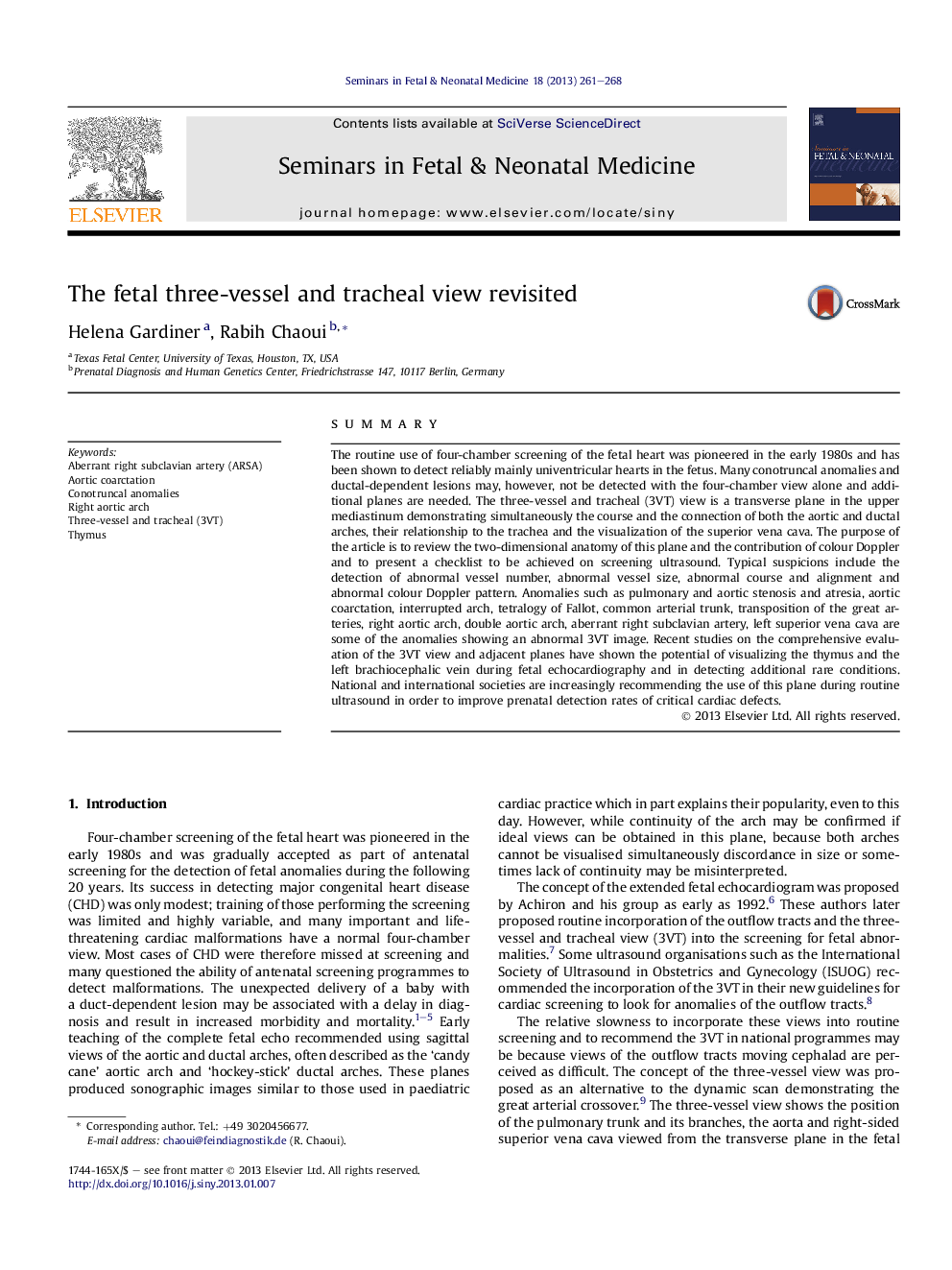| Article ID | Journal | Published Year | Pages | File Type |
|---|---|---|---|---|
| 6189255 | Seminars in Fetal and Neonatal Medicine | 2013 | 8 Pages |
SummaryThe routine use of four-chamber screening of the fetal heart was pioneered in the early 1980s and has been shown to detect reliably mainly univentricular hearts in the fetus. Many conotruncal anomalies and ductal-dependent lesions may, however, not be detected with the four-chamber view alone and additional planes are needed. The three-vessel and tracheal (3VT) view is a transverse plane in the upper mediastinum demonstrating simultaneously the course and the connection of both the aortic and ductal arches, their relationship to the trachea and the visualization of the superior vena cava. The purpose of the article is to review the two-dimensional anatomy of this plane and the contribution of colour Doppler and to present a checklist to be achieved on screening ultrasound. Typical suspicions include the detection of abnormal vessel number, abnormal vessel size, abnormal course and alignment and abnormal colour Doppler pattern. Anomalies such as pulmonary and aortic stenosis and atresia, aortic coarctation, interrupted arch, tetralogy of Fallot, common arterial trunk, transposition of the great arteries, right aortic arch, double aortic arch, aberrant right subclavian artery, left superior vena cava are some of the anomalies showing an abnormal 3VT image. Recent studies on the comprehensive evaluation of the 3VT view and adjacent planes have shown the potential of visualizing the thymus and the left brachiocephalic vein during fetal echocardiography and in detecting additional rare conditions. National and international societies are increasingly recommending the use of this plane during routine ultrasound in order to improve prenatal detection rates of critical cardiac defects.
